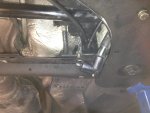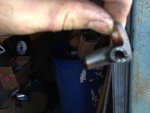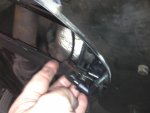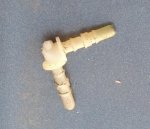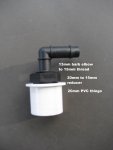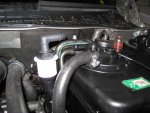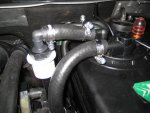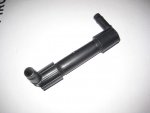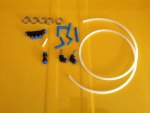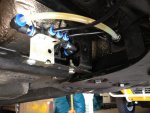This doesn't really cross to the billet topic elsewhere.
Xantia octopodes are famous (latterly) for breaking the moulded, non-reinforced thermoplastic tubes.
What makes the repair process an utter, utter, utter bastard - to paraphrase Rik - is firstly that every attempt to join hoses with an insert tube, simply splits the hose further, and secondly that they often break right near the overmoulded plastic junctions.
So here we go: You've broken a hose miles from the nearest Citroën specialist, and fluid is leaking all over the place. There is an ordinary car parts place or scrapyard nearby.
Measure the OD of your hose, without the heatshrink sleeving. For a 3/8" OD hose, you need 1/4" fuel line. For a 1/2" OD hose you need 5/16" fuel line.
The moulded junctions and elbows can be skinned. Carefully cut the black outer off with a hacksaw blade to reveal the residual hose stubs jammed upon barbed white nylon fittings. In fact, the entire fluid passage through the fitting is one piece of white nylon with a black overmould. You just need the white nylon bit, undamaged.
Now it's easy to see where and how the fuel line sections fit. Use clamps or twitch it up with a double loop of tie wire to be a real bush mechanic.
To butt join hoses, you need a short section of 3/8" ID fuel line for the smaller hoses, or a piece of irrigation line (approx 1/2" ID). Again, use clamps or tie wire for security, but the joins will be quite tight - you may need to lube with a bit of LHM to shove them together.
Top up lost fluid with whatever is to hand, and carry on.
Xantia octopodes are famous (latterly) for breaking the moulded, non-reinforced thermoplastic tubes.
What makes the repair process an utter, utter, utter bastard - to paraphrase Rik - is firstly that every attempt to join hoses with an insert tube, simply splits the hose further, and secondly that they often break right near the overmoulded plastic junctions.
So here we go: You've broken a hose miles from the nearest Citroën specialist, and fluid is leaking all over the place. There is an ordinary car parts place or scrapyard nearby.
Measure the OD of your hose, without the heatshrink sleeving. For a 3/8" OD hose, you need 1/4" fuel line. For a 1/2" OD hose you need 5/16" fuel line.
The moulded junctions and elbows can be skinned. Carefully cut the black outer off with a hacksaw blade to reveal the residual hose stubs jammed upon barbed white nylon fittings. In fact, the entire fluid passage through the fitting is one piece of white nylon with a black overmould. You just need the white nylon bit, undamaged.
Now it's easy to see where and how the fuel line sections fit. Use clamps or twitch it up with a double loop of tie wire to be a real bush mechanic.
To butt join hoses, you need a short section of 3/8" ID fuel line for the smaller hoses, or a piece of irrigation line (approx 1/2" ID). Again, use clamps or tie wire for security, but the joins will be quite tight - you may need to lube with a bit of LHM to shove them together.
Top up lost fluid with whatever is to hand, and carry on.


